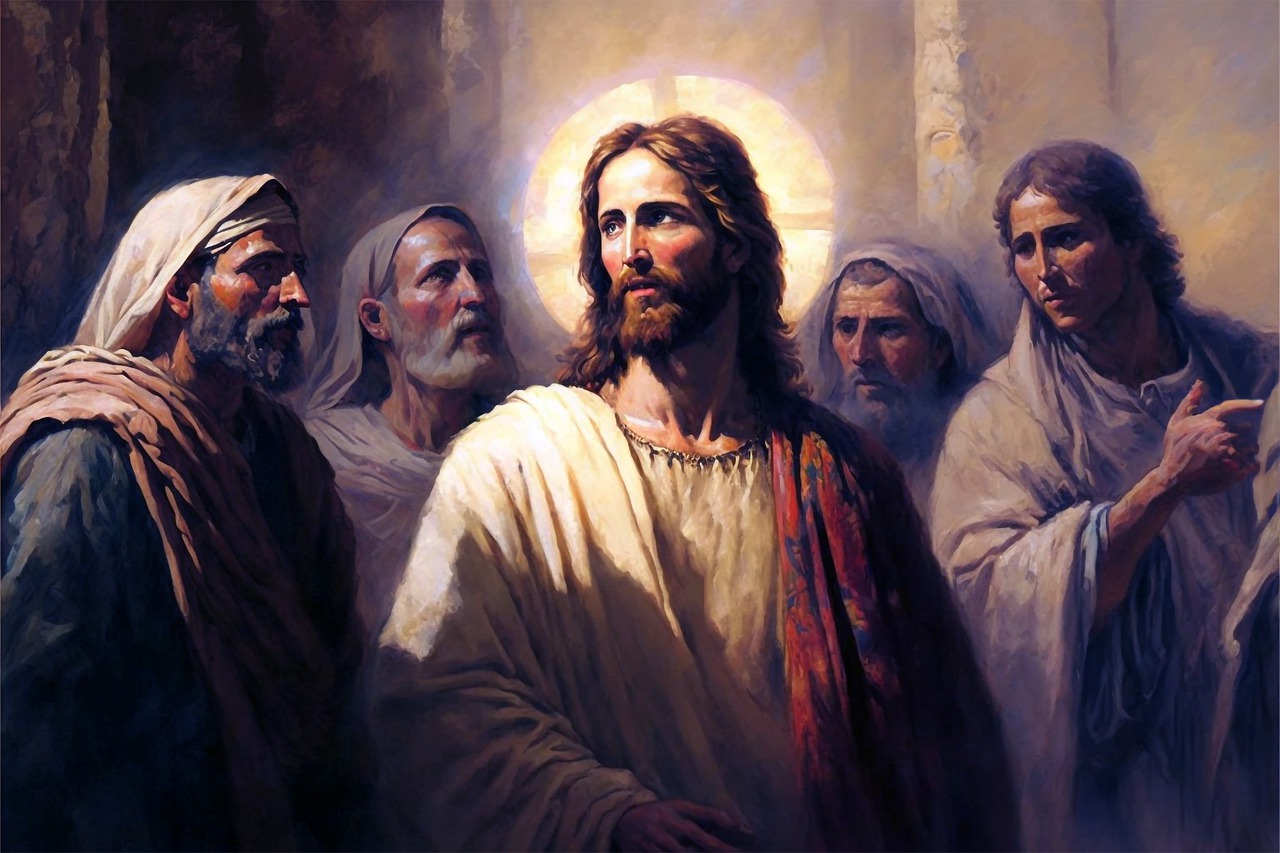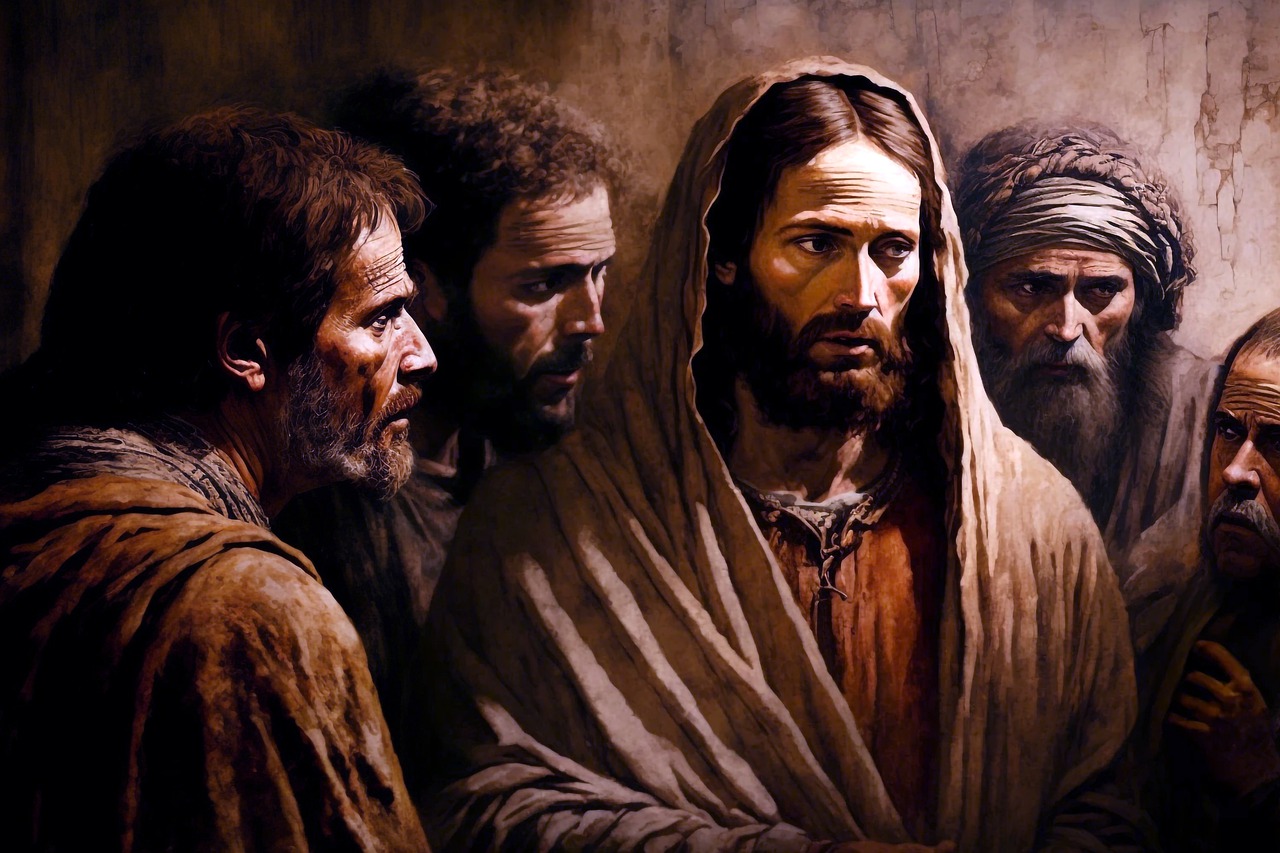Job 39 in the Bible
- Overview:
- Job 39 is a chapter in the book of Job, a part of the wisdom literature in the Bible.
- It explores divine parables and the enigma of the Messianic promise.
- Understanding Job 39 is crucial for biblical interpretation.
Overview of Job 39
- Placement and Context:
- Job 39 is situated within the larger narrative of Job’s story, specifically in the section where God responds to Job’s questioning.
- It follows the divine speeches in Job 38, where God challenges Job’s understanding of creation.
- Themes and Motifs:
- Job 39 delves into themes of God’s sovereignty, wisdom, and understanding.
- It highlights the intricate workings of creation and God’s control over all aspects of it.
- The chapter also touches on the relationship between human suffering and the mysteries of the natural world.
Job 39 is a significant chapter in the book of Job as it provides insights into divine parables and the enigma of the Messianic promise. Situated within the larger narrative of Job’s story, this chapter follows the divine speeches in Job 38 where God challenges Job’s understanding of creation. Job 39 delves into themes of God’s sovereignty, wisdom, and understanding, shedding light on the intricate workings of creation and God’s control over all aspects of it. Additionally, it explores the connection between human suffering and the mysteries of the natural world.
Divine Parables in Job 39
- Definition and Purpose:
- Divine parables are symbolic narratives used in biblical literature to convey spiritual truths.
- In Job 39, they serve as metaphors to illustrate the wisdom and sovereignty of God.
- Parables in Job 39: The behavior of the ostrich (Job 39:13-18) symbolizes a lack of wisdom and understanding.
- For example, the ostrich is described as leaving her eggs on the ground without worrying about them being trampled or eaten by other animals. This behavior demonstrates a lack of wisdom and understanding on the part of the ostrich, as she neglects to protect her offspring.
- The description of the horse’s strength (Job 39:19-25) showcases the power and majesty of God’s creation.
- The soaring eagle (Job 39:27-30) represents God’s authority and care over His creation.
- Significance of Divine Parables:
- Divine parables in Job 39 emphasize that God is the ultimate source of wisdom and understanding.
- They reveal God’s sovereignty over all aspects of creation, including human suffering.
Divine parables play a significant role in Job 39 as they are used to convey spiritual truths through symbolic narratives. These parables serve as metaphors to illustrate the wisdom and sovereignty of God. For instance, the behavior of the ostrich, as described in Job 39:13-18, symbolizes a lack of wisdom and understanding. The ostrich leaves her eggs on the ground without concern for their safety, demonstrating a disregard for her own offspring. This behavior highlights the importance of wisdom and understanding, as God is the ultimate source of these qualities. Furthermore, the description of the horse’s strength in Job 39:19-25 showcases the power and majesty of God’s creation, while the soaring eagle in Job 39:27-30 represents God’s authority and care over His creation. These divine parables emphasize God’s sovereignty over all aspects of creation, including the intricate relationship between human suffering and the mysteries of the natural world.
The Enigma of Messianic Promise in Job 39
- Introduction to Messianic Promise: Job 39 contains hints of Messianic faith, referring to a future redeemer who will bring deliverance and vindication.
- The nature and fulfillment of this promise remain an enigma in the text.
- Theories and Interpretations:
- Scholars offer various interpretations of the Messianic promise in Job 39.
- Walter Kaiser suggests that the Messiah fulfills roles such as arbitrator, mediator, advocate, witness, redeemer, and interpreter.
- These roles are seen as important for the redemption and restoration of humanity. Christ is believed to fulfill these roles in the New Testament.
- The New Testament presents Christ as the fulfillment of these roles and the ultimate Messiah.
- Connection to Job’s Suffering:
- The enigma surrounding the Messianic promise in Job 39 suggests that Job’s suffering is part of a greater mystery.
- It implies that Job’s redemption and vindication will come through the fulfillment of the Messianic promise.
Job 39 contains tantalizing hints of Messianic faith, pointing to a future redeemer who will bring deliverance and vindication. However, the exact nature and fulfillment of this promise remain an enigma within the text. Scholars have proposed various interpretations of the Messianic promise in Job 39. Walter Kaiser, for instance, suggests that the Messiah fulfills roles such as arbitrator, mediator, advocate, witness, redeemer, and interpreter. These roles are crucial for the redemption and restoration of humanity, and they find their fulfillment in Christ in the New Testament. The enigma surrounding the Messianic promise in Job 39 also connects to Job’s suffering, implying that his redemption and vindication will come through the fulfillment of this promise.
Different Interpretations of the Messianic Promise
- Scholarly Perspectives:
- Various scholars offer differing interpretations of the Messianic promise in Job 39.
- Some view it as a foreshadowing of Jesus Christ’s role as the ultimate redeemer and savior.
- They see the Messianic promise as a prophetic glimpse into the future fulfillment of God’s plan for salvation.
- Others see it as a metaphorical representation of hope and deliverance in times of adversity.
- Contextual Theories:
- The post-exilic nature of the book of Job influences interpretations of the Messianic promise.
- Job’s story reflects the experiences of the Jewish people during the exile and their longing for a Messiah.
- It is in this context that the Messianic promise takes on added significance, offering hope and comfort to a people in need.
- The New Testament Perspective:
- The New Testament, particularly the book of Hebrews, draws connections between Job’s words and the role of Christ.
- It presents Jesus as the fulfillment of Job’s anticipations, serving as an arbitrator, mediator, and redeemer.
- The Messianic promise in Job 39 finds its ultimate fulfillment in the person and work of Jesus Christ.
Scholars present varying interpretations of the Messianic promise in Job 39, contributing to a deeper understanding of this enigmatic text. Some scholars view the promise as a foreshadowing of Jesus Christ’s role as the ultimate redeemer and savior, considering it as a prophetic glimpse into the future fulfillment of God’s plan for salvation. Others interpret the promise metaphorically, seeing it as a representation of hope and deliverance in times of adversity. The post-exilic nature of the book of Job also plays a role in shaping interpretations of the Messianic promise, as it reflects the experiences of the Jewish people during the exile and their longing for a Messiah. Within the New Testament, particularly in the book of Hebrews, connections are drawn between Job’s words and the role of Christ. Jesus is presented as the fulfillment of Job’s anticipations, serving as an arbitrator, mediator, and redeemer. Ultimately, the Messianic promise in Job 39 finds its ultimate fulfillment in the person and work of Jesus Christ.
The Behavior of the Ostrich (Job 39:13-17)
- Overview of the Passage:
- Job 39:13-17 discusses the behavior of the ostrich and its lack of wisdom and understanding.
- It emphasizes that God is the dispenser of wisdom and understanding, while the ostrich possesses none.
- Symbolism of the Ostrich:
- The ostrich’s behavior serves as a divine parable, illustrating the consequences of lacking wisdom.
- For example, the ostrich is described as leaving her eggs on the ground without worrying about them being trampled or eaten by other animals. This behavior demonstrates a lack of wisdom and understanding on the part of the ostrich, as she neglects to protect her offspring.
- It highlights God’s sovereignty over the natural world and connects Job’s suffering to the mysteries of creation.
- Trusting God’s Wisdom:
- The passage encourages readers to trust in God’s wisdom and knowledge, even in the face of life’s mysteries and difficulties.
- It teaches that God is all-wise, all-knowing, and all-powerful, providing a foundation for faith in His plans.
- Just as the ostrich lacks wisdom and understanding, we too must rely on God’s wisdom and trust in His providence.
Job 39:13-17 presents a vivid description of the behavior of the ostrich, highlighting its lack of wisdom and understanding. The passage emphasizes that God is the dispenser of wisdom and understanding, while the ostrich possesses none. The behavior of the ostrich serves as a divine parable, illustrating the consequences of lacking wisdom. For instance, the ostrich is described as leaving her eggs on the ground without concern for their safety, neglecting to protect her offspring. This behavior demonstrates a lack of wisdom and understanding on the part of the ostrich. By drawing attention to the ostrich’s behavior, the passage underscores God’s sovereignty over the natural world and establishes a connection between Job’s suffering and the mysteries of creation. The passage encourages readers to trust in God’s wisdom and knowledge, even in the face of life’s mysteries and difficulties. It teaches that God is all-wise, all-knowing, and all-powerful, providing a foundation for faith in His plans. Just as the ostrich lacks wisdom and understanding, we too must rely on God’s wisdom and trust in His providence.
Biblical Interpretation of Job’s Story and Messianic Faith
- Post-Exilic Work:
- Job is often viewed as a post-exilic work, potentially a compilation of different texts.
- Recognizing this context helps to understand the portrayal of the Messiah in Job.
- Job’s Initial Statement:
- Job’s famous statement, “The Lord giveth and the Lord taketh away,” is often taken out of context.
- Job’s later bitterness towards God challenges the simplistic interpretation of this statement.
- Hints of Messianic Hope:
- Job expresses his longing for an umpire or arbitrator between himself and God.
- He anticipates a living person who can vindicate and redeem him from his troubles.
- Resurrection and Redemption:
- Resurrection theology is not uniformly presented in the Old Testament.
- Job’s desire for a witness, neighbor, and intercessor aligns with the call for a messenger who can bring redemption from the Pit.
- Christ as the Fulfillment:
- Walter Kaiser sees seeds of Messianic hope in these passages, with Christ fulfilling roles such as arbitrator, mediator, advocate, witness, redeemer, and interpreter.
- The New Testament, particularly the book of Hebrews, presents Christ in these roles.
The interpretation of Job’s story and its connection to Messianic faith is a subject of scholarly discussion. Job is often viewed as a post-exilic work, potentially a compilation of different texts, and recognizing this context helps to understand the portrayal of the Messiah in the book. Job’s famous statement, “The Lord giveth and the Lord taketh away,” is often taken out of context. Job’s later bitterness towards God challenges the simplistic interpretation of this statement, showing the complexity of his relationship with God. Throughout the narrative, hints of Messianic hope can be found as Job expresses his longing for an umpire or arbitrator between himself and God. He anticipates a living person who can vindicate and redeem him from his troubles. While resurrection theology is not uniformly presented in the Old Testament, Job’s desire for a witness, neighbor, and intercessor aligns with the call for a messenger who can bring redemption from the Pit. Walter Kaiser identifies seeds of Messianic hope in these passages, with Christ fulfilling roles such as arbitrator, mediator, advocate, witness, redeemer, and interpreter. The New Testament, particularly the book of Hebrews, presents Christ as the ultimate fulfillment of Job’s longings and anticipations.
The Use of Types and Figures in the Old Testament
- Types and Figures Defined:
- Types and figures are symbolic representations used in visions, dreams, and prophecies to foreshadow future events.
- They were also employed in the state and constitution of the nation of Israel.
- Messianic Focus of Prophecies:
- The prophecies of the Old Testament primarily revolve around the Messiah and His kingdom and salvation.
- They lead up to the great event of the Messiah’s introduction and the fulfillment of His promises.
- Historical Events as Resemblances:
- Many historical events in the Old Testament are regarded as resemblances and signs of the Messiah’s redemption.
- For example, the joy and songs of the Israelites at their redemption from Egypt resemble the joy in the Messiah’s redemption.
- Jewish Interpretation:
- Ancient Jewish rabbis understood that events in their history functioned as types and figures of the Messiah.
- They saw the destruction of Pharaoh’s army and God’s leading of the Israelites as resemblances of future Messianic events.
The Old Testament employs the use of types and figures to symbolically represent future events, providing glimpses and foreshadowing of what is to come. These symbolic representations can be found in visions, dreams, and prophecies throughout the Old Testament. Types and figures were not only used in prophecies but also played a role in the state and constitution of the nation of Israel. The prophecies in the Old Testament primarily revolve around the Messiah, focusing on His kingdom and salvation. They pave the way for the great event of the Messiah’s introduction and the fulfillment of His promises. Furthermore, many historical events in the Old Testament are regarded as resemblances and signs of the Messiah’s redemption. For example, the joy and songs of the Israelites at their redemption from Egypt resemble the joy that will be experienced in the Messiah’s redemption. Ancient Jewish rabbis recognized that events in their history functioned as types and figures of the Messiah. They saw the destruction of Pharaoh’s army and God’s leading of the Israelites as resemblances of future Messianic events.
The Prophecies in Job 39
- Job as a Book of Prophecy:
- The book of Job is classified as a book of wisdom and contains prophecies.
- Prophecies related to the end times are found in Job 38 and 39.
- Job 19:25-26 Prophecy:
- Job 19:25-26 prophesies the Second Coming of Jesus Christ and the resurrection of saints.
- It speaks to the hope of future redemption and eternal life.
- Symbolism in Job 39:
- Job 39 contains symbolism related to the end times and the roles of specific nations and entities.
- The horse represents China, the eagle represents Russia, and the unicorn represents the fourth beast and the Antichrist.
- These prophecies are seen as relevant in the context of current times.
The book of Job is not only a book of wisdom but also contains prophecies that offer insights into the end times. Prophecies related to the end times can be found in Job 38 and 39. Job 19:25-26, in particular, prophesies the Second Coming of Jesus Christ and the resurrection of saints, speaking to the hope of future redemption and eternal life. Furthermore, Job 39 contains symbolism that is relevant to the end times and the roles of specific nations and entities. In this context, the horse symbolizes China, the eagle symbolizes Russia, and the unicorn symbolizes the fourth beast and the Antichrist. These prophecies provide a unique perspective on the current times and offer valuable insights into future events.
Messiah in the Book of Job
- Post-Exilic Work and Compilation:
- Job is considered a post-exilic work that potentially comprises different writings.
- Recognizing this context helps to understand the portrayal of the Messiah in Job.
- Job’s Initial Statement:
- Job’s famous statement, “The Lord giveth and the Lord taketh away,” is often taken out of context.
- Job’s later bitterness towards God challenges the simplistic interpretation of this statement.
- Hints of Messianic Hope:
- Job expresses his longing for an umpire or arbitrator between himself and God.
- He anticipates a living person who can vindicate and redeem him from his troubles.
- Resurrection and Redemption:
- Resurrection theology is not uniformly presented in the Old Testament.
- Job’s desire for a witness, neighbor, and intercessor aligns with the call for a messenger who can bring redemption from the Pit.
- Christ as the Fulfillment:
- Walter Kaiser sees seeds of Messianic hope in these passages, with Christ fulfilling roles such as arbitrator, mediator, advocate, witness, redeemer, and interpreter.
- The New Testament, particularly the book of Hebrews, presents Christ in these roles.
The portrayal of the Messiah in the book of Job is influenced by its post-exilic nature and potential compilation of different writings. Recognizing this context is crucial in understanding how the Messiah is depicted in Job. Job’s famous statement, “The Lord giveth and the Lord taketh away,” is often taken out of context. It is essential to consider Job’s later bitterness towards God, which challenges the simplistic interpretation of this statement. However, within the narrative, hints of Messianic hope can be found as Job expresses his longing for an umpire or arbitrator between himself and God. He anticipates a living person who can vindicate and redeem him from his troubles. Resurrection theology is not uniformly presented in the Old Testament, but Job’s desire for a witness, neighbor, and intercessor aligns with the call for a messenger who can bring redemption from the Pit. Walter Kaiser identifies seeds of Messianic hope in these passages, with Christ fulfilling roles such as arbitrator, mediator, advocate, witness, redeemer, and interpreter. The New Testament, particularly the book of Hebrews, presents Christ as the ultimate fulfillment of Job’s longings and anticipations.
Conclusion
Job 39 provides valuable insights into divine parables and the enigma of the Messianic promise. The chapter explores the behavior of the ostrich as a divine parable, emphasizing God’s wisdom and sovereignty. The enigma surrounding the Messianic promise in Job 39 invites various interpretations and theories. Job’s story reflects his engagement with God during suffering and hints at Messianic faith. The Old Testament employs the use of types and figures to foreshadow the Messiah and His redemption. The prophecies in Job 39 offer glimpses into future events and the unfolding of God’s plan. Ultimately, the portrayal of the Messiah in the book of Job points to the hope and redemption found in Jesus Christ. Understanding Job 39 enhances biblical interpretation and deepens our understanding of God’s wisdom and sovereignty. It encourages trust in God amidst life’s mysteries and difficulties. Job 39 challenges us to reflect on the divine parables and the enigma of the Messianic promise, ultimately leading us to a greater appreciation of God’s plan for humanity.
#BookofJob #Biblicalexegesis #Messianicmystery #Job38interpretation #Biblicalanalysis #Biblicalliterature #OldTestamentstudy #Propheticsymbolism #Messianicforeshadowing #Jobantheology #TheodicyinJob #Divinerevelation #Job’sreflection #UnderstandingJob38 #JesusinJob



